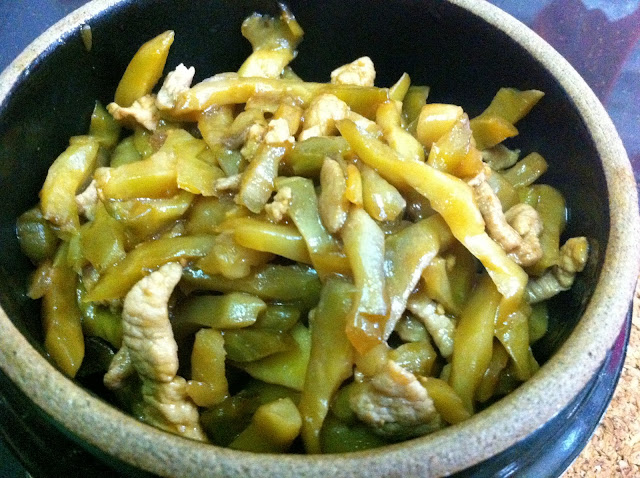 |
| Stirfried Bittergourd with Beansprouts (28 Mar 2012) |
Not many places serve this simple yet unusual combination of bittergourd with beansprout. So far, I've only had it at Good Fortune Restaurant, Bandar Puchong Utama. The restaurant is famous for country village food and it claims not to use MSG. The food didn't looked fancy but it tasted home cooked and had good flavours.I decided to cook the dish myself seeing that my parents loved it so much.
All you need is bittergourd, 30 cents worth of beansprout and some minced garlic. The only advice I would give is to soak the bittergourd in salt water to reduce the bitterness.
All you need is bittergourd, 30 cents worth of beansprout and some minced garlic. The only advice I would give is to soak the bittergourd in salt water to reduce the bitterness.
Stirfried Bittergourd & Beansprouts Recipe
Ingredients:
1 medium bittergourd
50gm beansprouts
1 tbsp garlic, minced
1/2 tsp chicken stock granule (optional)
1 1/2 tsp soy sauce
A dash of pepper
2 tbsp water
Method:
- Cut bitter gourd into half length-wised. Use a metal spoon to scoop and remove the centre pulp and seeds. Slice bittergourd thinly then soak in salt water for a while.
- Wash and drain the beansprouts. Remove the black husk and roots if any.
- Heat up wok. Add a tablespoon of cooking oil. Saute garlic until fragrant.
- Add the bittergourd and stir fry for 2 minutes. Add chicken stock granule and water. Cover with lid for 30 seconds.
- Add in the beansprouts, soy sauce and pepper. Stirfry for another 1 minute.
- Ready to serve!
















































